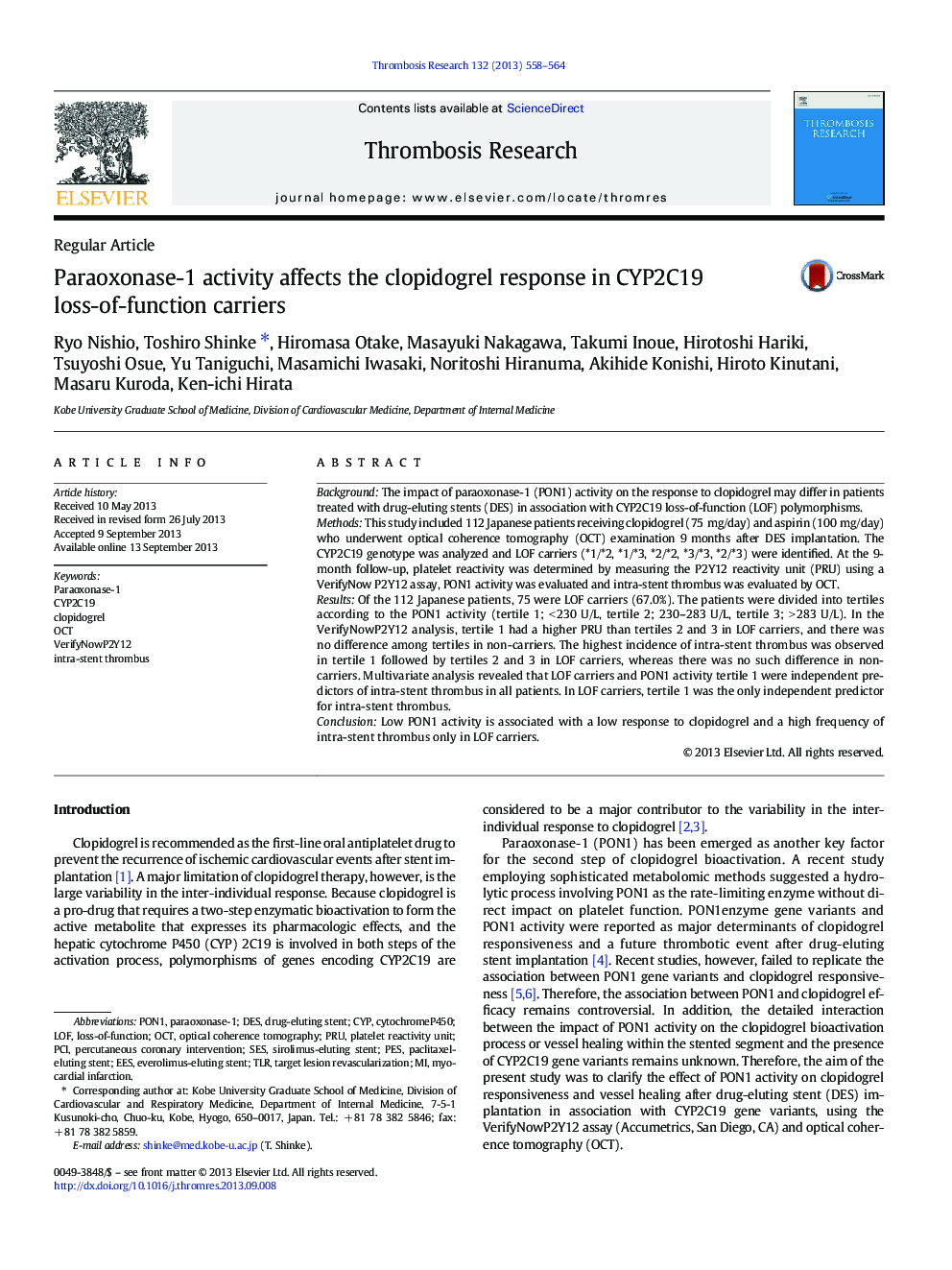| Article ID | Journal | Published Year | Pages | File Type |
|---|---|---|---|---|
| 6002735 | Thrombosis Research | 2013 | 7 Pages |
BackgroundThe impact of paraoxonase-1 (PON1) activity on the response to clopidogrel may differ in patients treated with drug-eluting stents (DES) in association with CYP2C19 loss-of-function (LOF) polymorphisms.MethodsThis study included 112 Japanese patients receiving clopidogrel (75Â mg/day) and aspirin (100Â mg/day) who underwent optical coherence tomography (OCT) examination 9Â months after DES implantation. The CYP2C19 genotype was analyzed and LOF carriers (*1/*2, *1/*3, *2/*2, *3/*3, *2/*3) were identified. At the 9-month follow-up, platelet reactivity was determined by measuring the P2Y12 reactivity unit (PRU) using a VerifyNow P2Y12 assay, PON1 activity was evaluated and intra-stent thrombus was evaluated by OCT.ResultsOf the 112 Japanese patients, 75 were LOF carriers (67.0%). The patients were divided into tertiles according to the PON1 activity (tertile 1; <Â 230Â U/L, tertile 2; 230-283Â U/L, tertile 3; >Â 283Â U/L). In the VerifyNowP2Y12 analysis, tertile 1 had a higher PRU than tertiles 2 and 3 in LOF carriers, and there was no difference among tertiles in non-carriers. The highest incidence of intra-stent thrombus was observed in tertile 1 followed by tertiles 2 and 3 in LOF carriers, whereas there was no such difference in non-carriers. Multivariate analysis revealed that LOF carriers and PON1 activity tertile 1 were independent predictors of intra-stent thrombus in all patients. In LOF carriers, tertile 1 was the only independent predictor for intra-stent thrombus.ConclusionLow PON1 activity is associated with a low response to clopidogrel and a high frequency of intra-stent thrombus only in LOF carriers.
